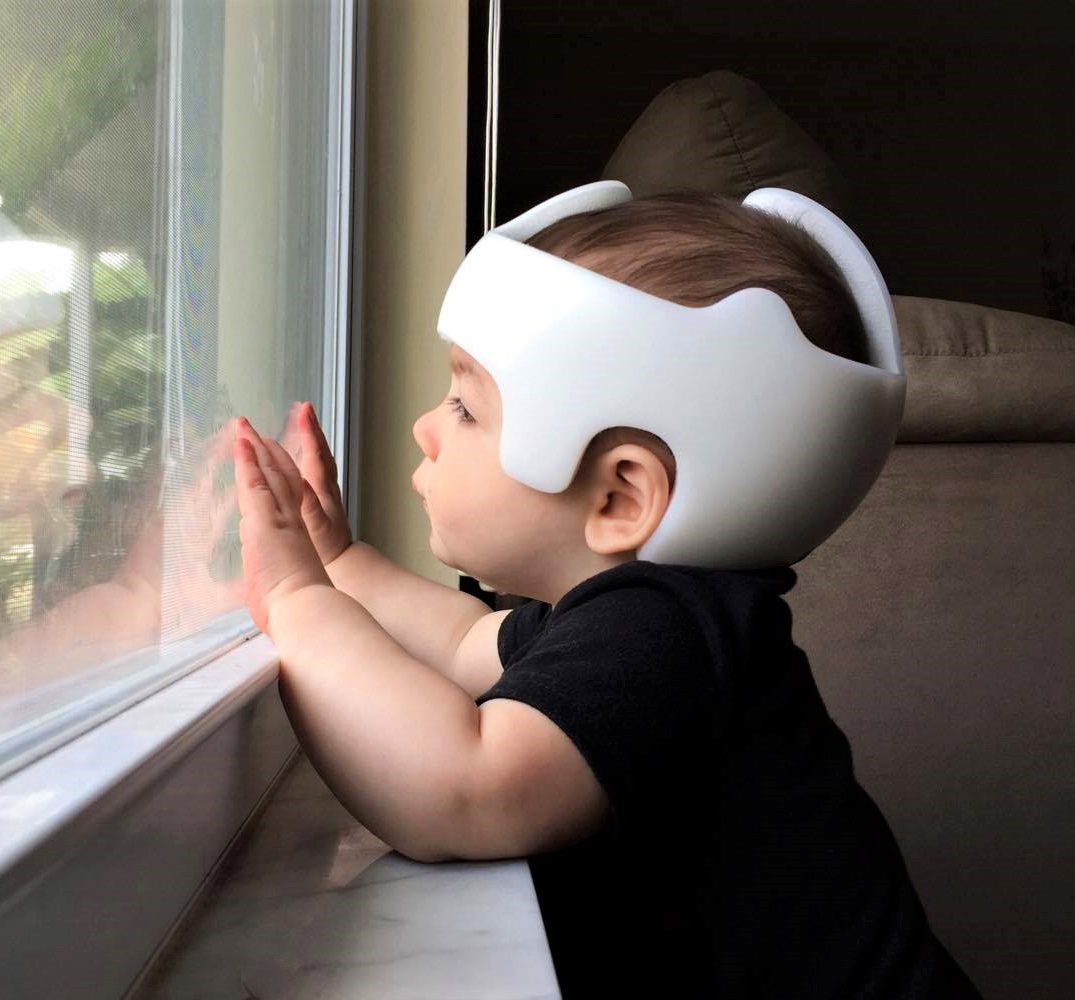Despite the quirky title and light-hearted tone the purpose of this blog is to bring a formal awareness to the cause, treatment, and prevention of plagiocephaly.
I wanted to write – not because I think I am eloquent enough to captivate an audience of interested readers – but because the subject matter is important to me and I hope it will reach the right person at the right time.
Quite frankly I don’t have a way with words. I wish I did but my thoughts are typically scattered so bare with me.
A quick introduction in case you are not my mom (who is actually the only other person who is willingly reading this). My name is Angela. I am a stay at home mom. I am married to my best friend, Shawn and together we have Lucas. Lucas is a 7 month old fireball who has turned our world upside down. It seems like he has been a part of our lives for so much longer than 7 months, yet these months have flown by all the same.
Lucas also has a bit of a flat spot on the back of his head. But before I dive into my long winded story of the road that led us to Cranial Technologies & the DocBand I want to share some info/background on plagiocephaly (pronounced play-jee-oh-sef-uh-lee).
With the amount of research+time spent studying plagiocephaly I feel I deserve some type of honorary degree in neuro/cranial science. Just sayin’.
Back to the basics.
Plagiocephaly is the fancy term for “flat head syndrome” in babies. Specifically, when only one side of the head is flat causing a diagonal/oblong head shape. It is most noticeable if you have a birds eye view looking down over top of the head. Often times asymmetry of the eyes, ears, jaw, and cheeks accompany plagiocephaly.
What causes it? (Stolen from the Cranial Tech website):
- Womb Position
Babies who become stuck in one position or do not have enough room to move in the womb are at risk of developing plagiocephaly. A breech orientation can also lead to an abnormal head shape. - Multiple Births
Plagiocephaly is common in cases of multiple births, where limited space can lead to distortion of the head. - Premature Birth
Premature babies have especially soft skulls, making them even more susceptible to misshaping. These babies often spend extended periods of time in the neonatal intensive care unit with the head in a fixed position while on a respirator. Premature babies are also more likely to be physically delayed, which can prevent normal movement of the head - Torticollis
Congenital Muscular Torticollis (CMT) is a condition in which the neck muscles are abnormally tight, causing baby’s head to tilt and/or turn to one side. Torticollis often causes the head to be held in a single position, which can lead to plagiocephaly. - Carriers & Convenience Devices
While in car seats, bouncy seats and swings, baby’s soft head is often placed against a rigid, unyielding surface. Though normal use is not a concern, extended use—and allowing an infant to sleep in such devices, in particular—increases the risk of plagiocephaly. - Back-Sleeping
The relationship between back-sleeping and plagiocephaly in infants is well-documented. While the American Academy of Pediatrics still recommends back-sleeping to prevent Sudden Infant Death Syndrome, they also recommend frequent rotation of baby’s head, as well as supervised tummy time. The recommended treatment for unresolved plagiocephaly is cranial helmet therapy.
Once again, this information is mostly for the mother who will come across this blog at 1am because you’ve been sobbing for hours after realizing your baby might have a flat spot and need helmet therapy. Not that I was ever that mom…But if I was that mom, I would understand. I would understand that you are feeling scared. And guilty. And unsure of every decision you’ve ever made as a mother. You’re overwhelmed and trying to process what your next steps should be.
Take a breath. Know that you are not alone. You are not a bad mother. The fact that you are seeking information+help means that you are in fact a great mother.
There’s more to our story but a teething 7 month old is calling. Aka refusing to nap.
If sharing our journey can be an encouragement to just one person, than I think this blog is worth it; so thanks for following along so far!
Angela

